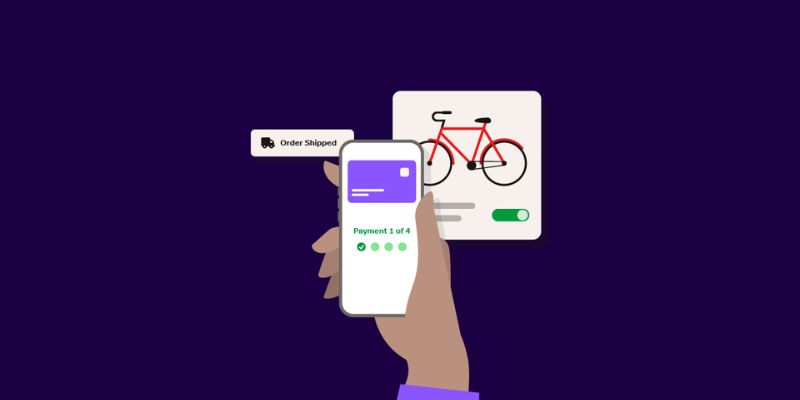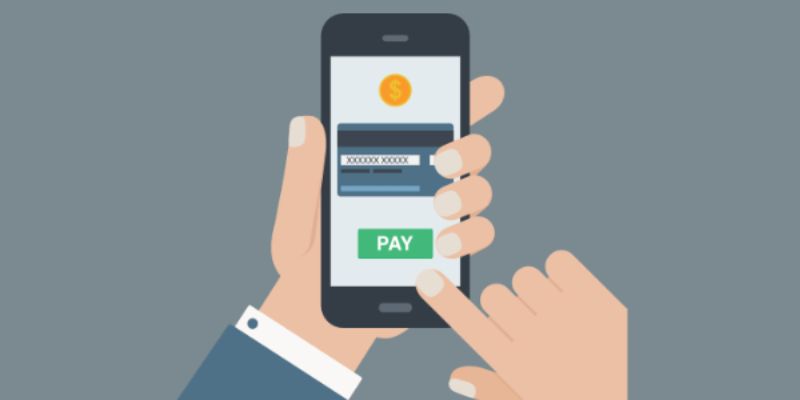Mobile Payment Platforms: Riding the Wave of Future Financial Trends
Money keeps changing, and so do the ways we handle it. Gone are the days when wallets jangled with coins and bills. Now, one tap on a screen pays for your coffee, your ride, or your groceries. Mobile payment platforms trends shape how we buy and sell, giving us speed and safety at our fingertips. Learn how the touch of a button revolutionizes our financial world, from the quick tap of NFC payments to the seamless scan of a QR code. We’ll dive into futuristic security measures that keep our cash safe, explore the boom in mobile banking, and chase the ultimate goal: a process so smooth, you’ll forget it’s even there. Get ready to embrace the change!
The Evolution of Payment Methods: Navigating through NFC and QR Technologies
The Rise of NFC Payments and Its Impact on Consumer Habits
NFC, or “Near Field Communication,” lets us tap to pay. No swiping, no dipping, just a quick tap with a smartphone or card. It’s fast, easy, and secure. This tech shift is changing how we all shop. NFC payments are on the rise. People love to pay without touching a thing. Digital wallets like Apple Pay are pushing NFC, too. They store our cards, so we don’t have to carry them.
This tap-and-go method cuts down time at the register. People can buy more in less time. And with NFC, you get fewer lines and happier customers. This makes NFC a big win for shops and buyers alike. Stores want to make paying easy, so they’re adding NFC to their systems. They know speed and ease can bring customers back.
But NFC is not just for stores. Buses, trains, and even vending machines use NFC. It makes life smoother when on the go. Plus, phones with NFC can share stuff like photos with a tap. That’s handy!
QR Code Checkouts: A Seamless Bridge between Online and Offline Commerce
Now, let’s chat about QR codes. They’re those square barcodes that look like puzzles. You’ve seen them on ads, products, and even on bills. Why are they cool? You just scan them with your phone’s camera. Bang! Pay for something or get info quick. It’s like magic!
QR codes are great for online and in-store shopping. Many sellers use them for a seamless checkout. You pick what you like, scan a code, and you’re done. It’s a smooth way to connect online shopping with physical stores. No more waiting in line to pay. Just scan, pay, and go. This is perfect for folks who order online but pick up at the store.
These codes also help shops learn what you like. They give special deals via QR codes, and you snap them up! It’s a smart way for stores to keep you happy and coming back. This whole QR code thing is pretty rad for all of us who like quick and easy.
Mobile banking apps use QR codes for money transfers, too. This means you can pay back your mate by scanning their code. Neat, right? And for those selling things, QR codes make getting paid a breeze.
In conclusion, NFC and QR codes are rocking our world. They are changing how we pay and shop. In the next few years, we’ll see even more of them. We’re speeding towards a future where our phones are our wallets, and checkout lines are just a memory. It’s all about making life simpler and safer, and I’m here for it.
Now, that’s a peek at the future of how we pay. We’re moving faster, getting smarter, and staying secure. What’s not to love?

Advancing Security in Mobile Payments: The Dual Role of Biometrics and Tokenization
Enhancing Transaction Security with Biometric Authentication
Ever tap your phone to buy something? It’s cool, right? But ever wonder how it stays safe? Your unique body features, like your fingerprint or face, lock down your payments. This magic trick is called biometric authentication. It checks that you are really you every time you buy stuff. Your phone or payment app uses this tech to keep your money safe. You just need to show your face or touch a sensor. Simple and super fast, it makes buying safe as houses. Let’s dive deeper.
When you use your fingerprint, your phone turns it into a secret code. It then compares this code with the one it saved when you set it up. If they match, it knows it’s you and bam! Payment done. It’s the same with your face. Cameras and sensors map your face and check if you are the one holding the phone. No match, no money leaves your wallet. This keeps you in control and your cash away from the bad guys.
Tokenization: A Behind-the-Scenes Hero in Protecting Payment Data
Now, let’s peek behind the curtain. Ever hear of tokenization in mobile payments? It’s a bit like giving your card a costume to hide its real numbers. So even if someone sneaky gets hold of the costume, they can’t buy stuff because they don’t have your card’s real info. Each time you tap to pay, a one-time code goes to the store instead of your actual card number. This code is no good to thieves because it changes every time.
This token stuff happens in a flash – you won’t even notice. Your phone talks to your bank and makes this token each time you pay. It’s like a secret handshake only they know. Your details are safe, and you get to walk out with your shopping. It’s smart, right?
Let’s break it down. The real card details stay hidden in a vault, so to speak. The token is like a fake ID your phone uses just for that one deal. And because it changes all the time, it’s a tough nut for crooks to crack. This means you can keep buying your favorite stuff without fretting about someone ripping you off.
In a nutshell, biometric stuff keeps your identity tight and tokenization hides your card info. Together, they’ve got your back so you can shop with peace of mind. We’ve wrapped our heads around a lot, but trust me, it’s all about keeping your money as safe as your phone keeps your selfies. Stay tuned for more ways these smart techs are shaping up to lock down our digital dollars.

Revolutionizing the Banking Landscape: Mobile Platforms and the P2P Revolution
The Explosive Growth of Mobile Banking Solutions
Mobile banking is changing how we save, spend, and send money. Folks love being able to tap their phones to pay for things. NFC payments let us just wave our phone like a magic wand and boom – payment done! This tech is getting more popular every day. Banks are catching on too. They’re packing their apps with cool stuff to make our lives easier. And the best part? We can use these apps almost anywhere.
Mobile banking means no more waiting in lines at the bank. You just need your phone to check balances or move your cash. What’s making this even better? Security is tight. Things like biometric authentication keep your money safe but easy to reach. Your fingerprint or face is your new password.
People used to think tech made things harder for some. But now, this mobile magic is helping everyone join in. Even folks who had a hard time getting to a bank can now tap away on their phones to manage money.
P2P Payment Systems: Facilitating Easier Money Exchanges
Did you ever owe your friend money for lunch? P2P payment systems are the fix. They help you pay your pal back in a snap. No cash, no problem! These apps let you send money with a few taps on your phone. And they’re great for splitting bills or giving a gift.
Security is key, and keeping your info safe is a big deal. But guess what? These P2P apps are on it with solid mobile payment security. They use things like tokenization, so your card details stay secret. It’s like your real card info is wearing a disguise so no one can sneak a peek.
E-wallet trends are popping up in P2P, too. They’re not just for paying. With digital wallets, you can also get and send money. And these wallets are smart. They can track your spending and help you save. Mobile payment gateways make sure this all runs smooth as silk. They’re like the friendly middleman, helping your money hop from your phone to your friend’s with no hiccups.
This stuff is so cool, it’s changing how we think about cash and cards. Some folks say we might even become a cashless society soon. Imagine your phone as your wallet, your bank, and your best shopping buddy all rolled into one!
So, whether you’re paying for tacos, saving up for a bike, or just watching your cash, mobile platforms are here to help. And I’m here to tell you, it’s just getting started! Keep your eyes peeled, ’cause this wave is only getting bigger. And remember, whether you’re using Apple Pay, Google Pay, or any other app, the goal is the same: make money stuff easy and safe for everyone.

The Quest for a Frictionless User Experience: Trends in Digital Wallets and Mobile Gateways
Digital Wallets: User Adoption and the Quest for Convenience
Imagine paying for coffee with just a tap on your phone. It’s easy, right? That’s why digital wallets are a hit. They store our cards and cash digitally. No more thick wallets! People worldwide are loving this shift. Why? Because it’s super convenient.
Digital wallets aren’t just about storing cards. They also help with loyalty points. Businesses love this. They can reward customers easily. And folks like us? We enjoy the perks without the hassle of keeping track of tiny cards and loose paper punches.
But, there are too many wallet apps out there. This confuses users sometimes. So, what do we look for? A solid digital wallet that’s safe and works almost anywhere. Apple Pay, Google Pay, and Samsung Pay understand this. They make sure you can use your phone to pay with a simple touch at most places. They keep growing strong in the market for this reason.
What’s truly helping digital wallets spread? NFC technology, which lets us pay without contacts. Just tap your phone on a payment machine and you’re done. It’s fast and secure. More places accept it every day, which means reaching for your phone instead of your wallet is becoming second nature.
Mobile Payment Gateways: Enriching the User Experience Through Innovation
Now, let’s talk about mobile payment gateways. These are the magic behind online shopping. They make sure your money moves safely when you buy something on the web. They work backstage so you can have an easy checkout.
Mobile gateways are smart. They remember your payment info if you want them to. Next time you buy, all it takes is a few clicks. Plus, they use smart tricks to keep your card details safe. This trick is called tokenization, and it turns your real card number into a code that’s no good to anyone but the payment system.
As shopping on phones gets more popular, gateways are making sure they keep up. They’re getting better at dealing with different currencies. This lets you buy from other countries with less fuss.
Keep an eye out for QR codes too. Shops use them a lot now. You just scan the code with your phone and pay. Easy!
There’s a lot going on in mobile payments right now. Things like voice-activated payments might soon make waving your phone around look old school.
Here’s the thing. All these smart payment ways are growing fast because they offer something we all want: a smooth ride. We get to zip through buying stuff with less waiting and more doing. And hey, who doesn’t want their life to be a bit easier?
Remember, we’re seeing just the start of how our phones will handle money. It’s an exciting time, and the best part? It’s all focused on making things better for users like you and me.
We’ve seen payment methods evolve from NFC tech to QR codes, changing how we buy and sell. NFC makes paying fast and easy, influencing our shopping ways. QR codes link our online and offline worlds, making checkout smooth.
We also learned how biometrics and tokenization boost mobile payment security. Your fingerprint now keeps your money safer than ever. Tokenization works quietly to protect your card details.
Then, we dived into mobile banking’s rapid growth and how P2P is shaping money sharing. These platforms make transactions quick and pain-free.
Lastly, we talked about digital wallets and payment gateways. They’re all about making things simpler for us, the users. They keep on innovating to make our payment experience better.
Here’s the takeaway: as you navigate these new payment waters, remember it’s all about making your life easier, safer, and better connected. Let’s embrace the changes and enjoy the benefits they bring to our daily transactions.
Q&A :
What are the current trends in mobile payment platforms?
Mobile payment platforms are evolving rapidly with trends like increased adoption of contactless payments, integration with social media for seamless transactions, and the rise of digital wallets replacing traditional payment methods. Mobile payment systems are also focusing more on security through biometrics and tokenization. Additionally, greater emphasis is being placed on cross-platform compatibility and expanding the use of mobile payments in developing countries.
How is the growth of mobile payment platforms impacting consumer behavior?
The growth of mobile payment platforms is significantly changing consumer behavior. Customers are increasingly seeking convenience, speed, and security in their transactions. The availability of mobile payments has led to a decrease in the use of cash and has made consumers more comfortable with digital financial services. This shift is also driving businesses to adopt mobile payment capabilities to meet customer demand and stay competitive.
Are there any emerging technologies influencing mobile payment platforms?
Yes, emerging technologies like Near Field Communication (NFC), blockchain, and 5G are revolutionizing mobile payment platforms. NFC technology enables contactless payments with just a tap of the smartphone. Blockchain provides a secure and transparent way for peer-to-peer transactions, potentially reducing the need for intermediaries. Meanwhile, 5G is expected to enhance the speed and reliability of mobile payment transactions, leading to an improved user experience.
What role do mobile payment platforms play in financial inclusion?
Mobile payment platforms play a critical role in financial inclusion by providing access to financial services for unbanked and underbanked populations, especially in developing regions. These platforms allow users to conduct financial transactions, access credit, and save money without the need for traditional banking infrastructure. They have opened up opportunities for small businesses and individuals to participate in the economy, thus fostering economic growth and reducing poverty.
Are security concerns affecting the adoption of mobile payment platforms?
Security is a top concern for consumers when it comes to adopting mobile payment platforms. While these platforms often employ robust security measures, including encryption and tokenization, news of data breaches and fraud can shake user confidence. Providers must ensure the highest security standards to gain and retain trust from users. Educating consumers about the security features and best practices for protecting their information can also help to mitigate these concerns and promote wider adoption.

